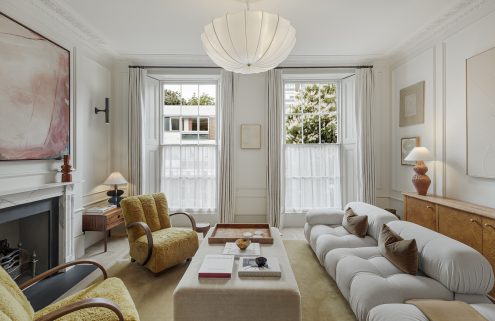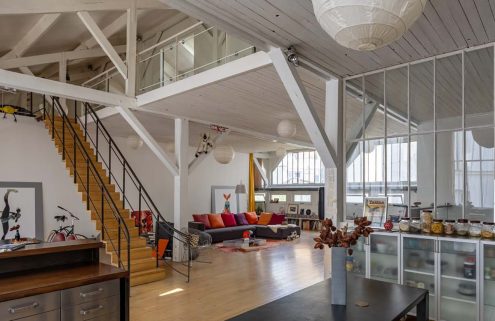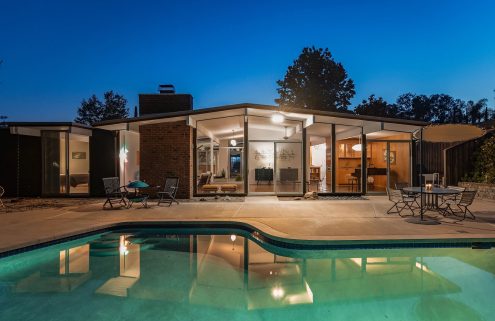Their design couldn’t be more simple: a single room housed in a box with a gently pitched roof and double doors. Anywhere else this would be called a shed. But along the UK’s coastline, they are beach huts. And they’re shorthand for a typical British seaside holiday of yesteryear, bringing to mind cups of tea made on the gas ring and drunk sitting in a deck chair in the sun – or rain.
In recent times, these shacks have become increasingly sought-after and in popular coastal areas have been souped up. Which explains why a beach hut in trendy Mudeford, Dorset, has sold for £325,000. This one boasted a mezzanine, WC, heating, solar panels, and sleeping space for six people.

Despite the significant cost of beach huts with such accommodation, at local agent Denisons the phone hasn’t stopped ringing. ‘I think the “staycation” is playing a big part and a lot of people are still nervous of traveling abroad,’ says principal Andy Denison. ‘We’ve got into the habit of staying local and making the most of it.’
That nostalgia fix offered by beach huts is playing its part, he believes. ‘It’s something that we did in the 1970s and this has bought back childhood memories.’
But even the more traditional, basic sheds – without sleeping quarters – command a hefty sum. In Mudeford that can be £92,000, rising to £150,000 in Southwold on the east coast. For pricy bijoux spaces, they’re up there with coveted parking spaces, like the one in the Somerset town of Taunton, which was on the market for £8,000.

For contemporary tarted-up beach huts, the dominant aesthetic could be described as utilitarian-marine. Painted woodwork (with matching enamel crockery), timber flooring for easy sweeping away of sand, and lots of storage for beach paraphernalia, such as windbreaks, buckets and spades, towels and sun loungers.
The predecessor to the beach hut was the bathing machine, a cumbersome chalet on wheels. Once a Victorian had changed into swimwear, he or she was towed into the water and took a dip from the hut.

After WWI, people lightened up a bit and it was deemed acceptable to walk into the water in full view, having changed on the beach in a bathing hut whose wheels had been removed or in a new hut, provided by the council.
Such is their current popularity that some local councils are considering building more beach huts, like Romney Marsh in southeast England, where up to 100 new huts are proposed.
But ownership isn’t the only route to this seaside idyll. The weekly rent of a 6 sq m beach hut in Suffolk’s Pakefield runs to just £125.
See 5 beach huts for sale in the UK

The Esplanade, Frinton-On-Sea, Essex
£35,000 via Sheen’s
Freshly refurbished in a grey and white colour palette, this Frinton beach hut is on the second row of a beachfront development in Essex and measures 8.76 sq m. The hut has a kitchenette and is within 50 metres of a fresh water supply, 250 meters of public toilets.

Avon Beach Hut in Mudeford, Christchurch, Dorset
£95,000 via Beachhuts4hire.co.uk
Sited on the sandy Avon Beach in popular Mudeford, to the east of Christchurch, is this white-painted hut with refurbished kitchen. Public toilets, cafe and amenities are nearby and the hut has views of the Isle of Wight. The beach is popular with families and swimmers thanks to its gently sloping shelf.

Eastcliff Promenade in Walton-on-Naze, Essex
£65,000
Southcliff or Eastcliff? There’s a strong rivalry between these two picturesque Walton spots though luckily the two beaches are just a short walk from each other. Eastcliff is the lesser known of the two, and this beach hut occupies a prime front row spot of the Promenade, a short walk from Walton Pier. It’s available to hire and is listed for sale via beachhuts.com directly by the owner, with site fees paid until April 2022. Cafes, toilets and free parking are located closely.

Southcliff beach hut 117, Walton-on-Naze, Essex
£28,000 via Beachhuts.com
Part of a development constructed in 2015, this beach hut in Southcliffe enjoys panoramic views of the Walton coastline. The hut has as kitchenette and folding day bed, and has been well maintained by its owners who let it for day rentals. It’s listed for sale directly, with contact details on Beachhuts.com

Shoreham-by-Sea hut, Steyning, west Sussex
Offers over £40,000 via Warwick Baker
Located above the shingled shores of Shoreham-by-the-sea, this rustic beach hut is within 500 metres of the new footbridge and faces directly onto the sea. Its price tag reflects its location rather than its interiors specs, which are rustic compared to others in the gallery.
Steyning is a historic town, bordered by the South Downs and dotted with timber-framed buildings along its ancient high street.























